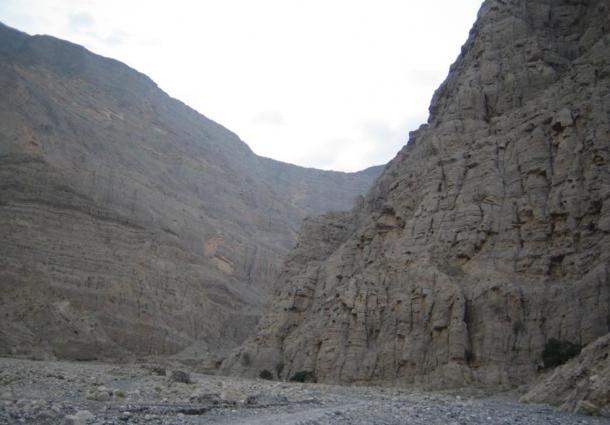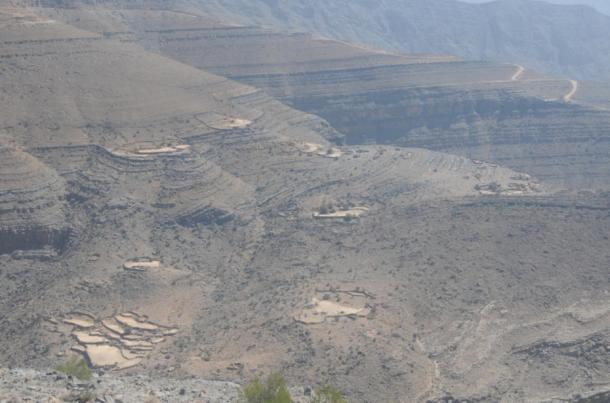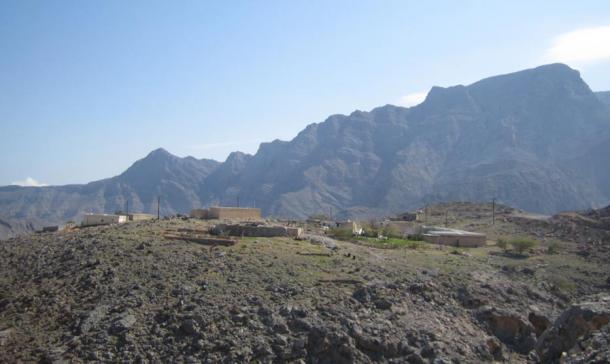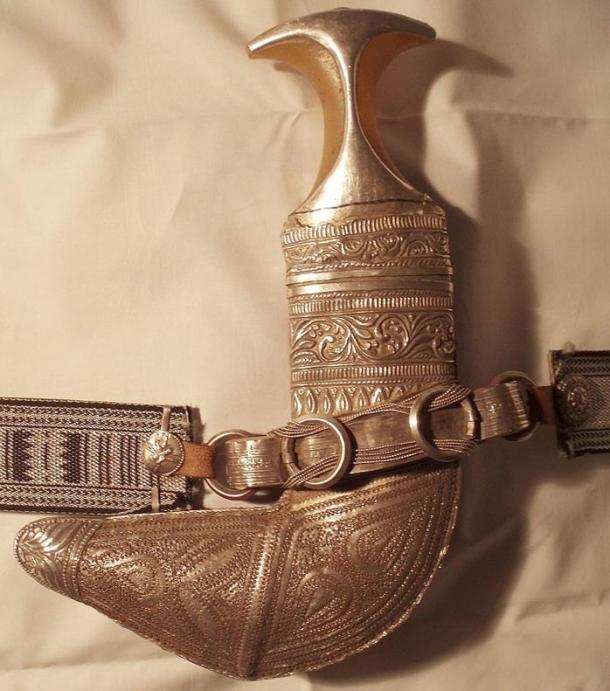
Are the Reclusive Shihuh People of Musandam the Original Arabians?
Two hours’ drive from Dubai in the mountains of Musandam lives a reclusive tribe of people who appear culturally unrelated to any others in the Arabian Peninsula, yet who may well be its original inhabitants. They are the Shihuh, the ‘hill people’.
According to Paolo Costa, former head of Oman's Department of Antiquities, the Shihuh are a mystery. “They are a most extraordinary people,” says Costa. “Ethnically, we don't know who they are. There is speculation that they are the original inhabitants of Arabia,” pushed back into the mountains by successive Muslim and Portuguese invasions.
Hidden with a Rugged Landscape
The history of the southern Arabian peninsula has been one of repeated invasion and colonization by different groups – starting 150,000 years ago when mankind first came ‘out of Africa’ and crossed into Arabia, and continuing up to more recent times with Yemenis, Saudis, Persians, Portuguese and finally the British – only ending with the independence of Oman in 1749 and the United Arab Emirates in 1971. So with a history of invasion and counter-invasion, figuring out who was there first is not simple.
Musandam, the long finger of the Arabian Peninsula pushing towards Iran, has always been too rugged to be readily invaded and its people had a reputation for their hostility towards visitors. As a consequence its people have been largely isolated from the rest of southern Arabia. During World War II, for instance, when a bomber was lost in the region it was considered too dangerous to go into Musandam to look for it. Today the Shihuh no longer kill visitors, but they do not welcome them either.
Even getting into the area has been difficult until fairly recently, as prior to the 1970s there were simply no roads into the interior. In many areas it is protected by steep cliffs, which led the Shihuh to build some extraordinary cliff stairways to reach their villages.
- Is there truth to the Bedouin Legend of the Great River in the Desert?
- Ancient beehive tombs of Oman – so where are the bodies?
- Iram of the Pillars, the Lost ‘Atlantis of the Sands’
Mountains as Dramatic as they are Dangerous
Facing Ras Al Khaimah is the famous Stairway to Heaven, in parts only a one-foot wide ledge at a 45 to 60 degree angle up a near-vertical cliff face, with gaps covered by handmade bridges of intricate stonework held in place solely by gravity. It is described by one guidebook as “a very, very serious eight to 12 hour hike that should not be attempted by novices”.

The Shihuh mountain territory is protected by steep cliffs. Photo credit: David Millar
The Shihuh are culturally and linguistically different from their Arab neighbors in the UAE and Oman. Unlike the Bedouin from whom most Arabs in the UAE trace their roots, the Shihuh are not nomadic wanderers of the desert, but farmers. High in their mountain stronghold they have created an impressive structure of high-altitude terraced fields which follow the contours of the land, and also sophisticated water collection and storage systems, with gullies feeding large stone cisterns known as birkahs which are up to a hundred feet wide.

Terraced fields allow the Shihuh to grow crops at high altitudes. Photo credit: David Millar
From these closely-guarded fields they gather two crops a year, but they also supplement this by fishing in the summer months. This annual migration from the mountains to the coast has resulted in another feature which sets the Shihuh apart – they have two tribal territories and two homes: their mountain villages with single-story stone houses known as bait al qufl (meaning ‘cave house’ as they are partially underground), and their fishing villages, less permanent structures built from coral and palm fronds or arish.

Modern Shihuh village in Musandam. Photo credit: David Millar
Distinct Culture and Traditions
Linguistically it is often said that the Shihuh speak a language unrelated to any other, but this is not really the case. Although their language is often unintelligible to other coastal Gulf Arabs it is in fact a dialect of Arabic, merely evolved in its own way through hundreds of years of isolation.
- Ancient tomb discovery reveals traces of Indus Valley civilization in Oman
- Scientists Believe they Have Found the Origins of the Unique Basque Culture

A golden scarf and veil worn in Southern Iran, called the battula, is similar to those traditionally worn by Shihuh women. (CC BY 2.0)
Another intriguing difference is the traditional dress of the Shihuh. Instead of the white ghutra headgear worn by Gulf Arabs, the Shihuh favor the colored headgear seen more commonly further south in Oman and Yemen, and whereas the Bedouin carry ceremonial curved knives known as khanjar, the Shihuh have a long-handled axe they call a jerz. The latter has been compared with Stone Age axes and has led to speculation that the Shihuh may be some kind of prehistoric people.

A khanjar, the traditional dagger of Oman. (Public Domain)
So where did these relatively isolated and different people originally come from? Their own traditions say that the Shihuh came into Arabia in the great wave of immigration which brought groups of Arab tribes under Malik bin Fahm from the Yemen to south-east Arabia in the second century AD, yet there is no firm evidence for this such as Yemeni family names. Likewise, linguistic analysis shows no signs of influence from Iran or Baluchistan or countries to the east across the Gulf of Oman.
Archaeological discoveries have shown that some of the first waves of people to have come ‘out of Africa’ entered Musandam via Yemen and Oman, as evidenced by finds of stone axes not far away at Jebel Faya. Are the Shihuh their descendants? Genetic studies of their DNA would undoubtedly cast light on the situation, but until that time it really is a mystery.
Featured image: Deriv; Woman with veil and scarf (CC BY 2.0) and Khor Ash Sham, Musandam Peninsula, Oman. (CC BY-SA 3.0)
By David Millar
Author of Beyond Dubai: Seeking Lost Cities in the Emirates.
References
‘Language Minorities in the UAE: Al Shehhi and the tribal dialects, Khodamuni and the Balush’, Ron Hawker, Digital Heritage of the UAE blog, 2015 [Online] Available here.
‘The Mountains of Musandam’, Saudi Aramco World, May/June 1983. [Online] Available here.
‘Beyond Dubai: Seeking Lost Cities in the Emirates’, David Millar, Melting Tundra Publishing, 2014. [Online] Available here.















Comments
Hello,
This article is very interesting ! I'm working on a documentary about Oman, and I'm looking for information about the Shihus people. Could you contact me? lsauvajon[at]smartcutagency.com
Thanks a lot,
Lou
How culturally different are they from other Arabs? Religion? Gender dynamics? Marriage customs?
You can see their wonderful terraces from Google.
That’s becoming a harder question to answer meaningfully as many of the Shihuh are moving into the cities these days, especially Ras al Khaimah which is nearby, but most estimates are around 15,000, perhaps half still living in the mountain villages.
Any estimate of how many people are in this tribe?
Pages